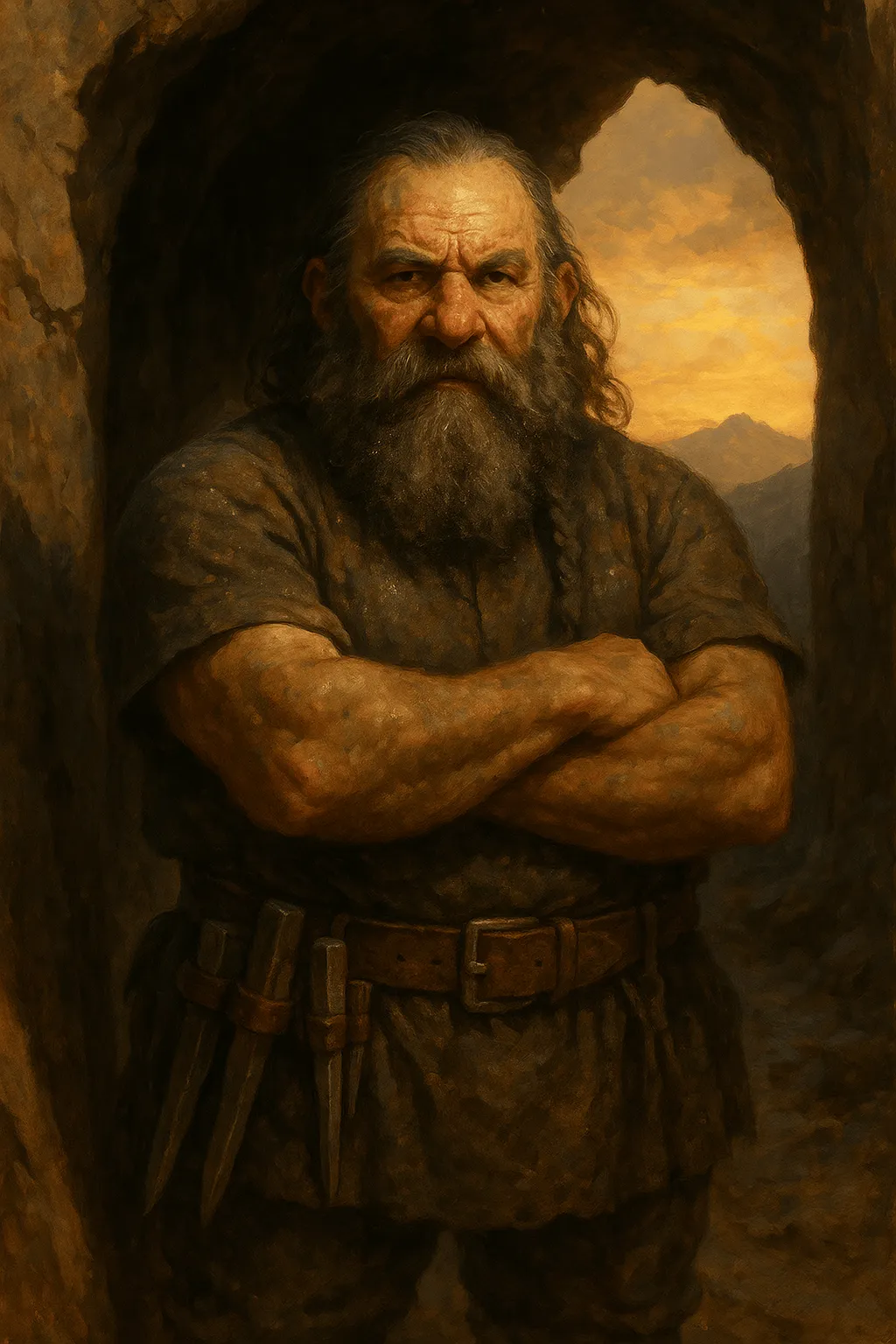
Stone forgets nothing. When rinsed, how will it remember you?
Among the mountainfast holds and granite-buried cities of the world, the Stonecutter Dwarf is both architect and archivist. To most outsiders, they are exactly what one expects a dwarf to be — squat, broad-shouldered, with soot-dark fingers and the perpetual scent of metal filings or quarried dust trailing after them like a badge. Yet this assumption only scratches the outer crust. Beneath the surface — just as with the stone they carve — lies something older, quieter, and more refined.
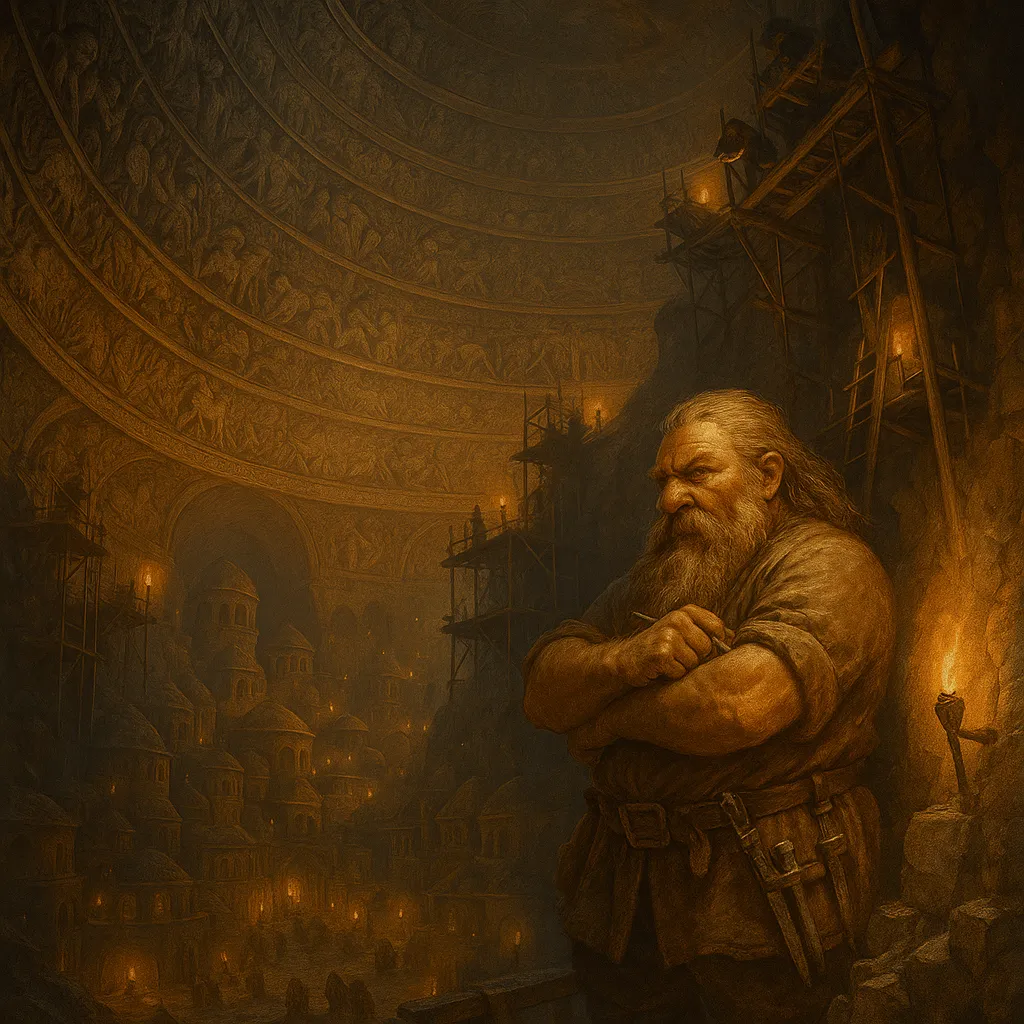 The Stonecutter Dwarves are descended from the earliest clans who settled within the bones of the world. While many dwarven lineages lay claim to surface mines, lava forges, or gem-buried riverbanks, the Stonecutters prefer the deep, dead rock — layers untouched by sun or roots, far from veins of ore or glinting stones. Their sacred task is not extraction, but shaping. To them, stone is not a resource to be spent, but a living material to be coaxed into form. They do not dig for gold. They dig for silence — and in that silence, they listen.
The Stonecutter Dwarves are descended from the earliest clans who settled within the bones of the world. While many dwarven lineages lay claim to surface mines, lava forges, or gem-buried riverbanks, the Stonecutters prefer the deep, dead rock — layers untouched by sun or roots, far from veins of ore or glinting stones. Their sacred task is not extraction, but shaping. To them, stone is not a resource to be spent, but a living material to be coaxed into form. They do not dig for gold. They dig for silence — and in that silence, they listen.
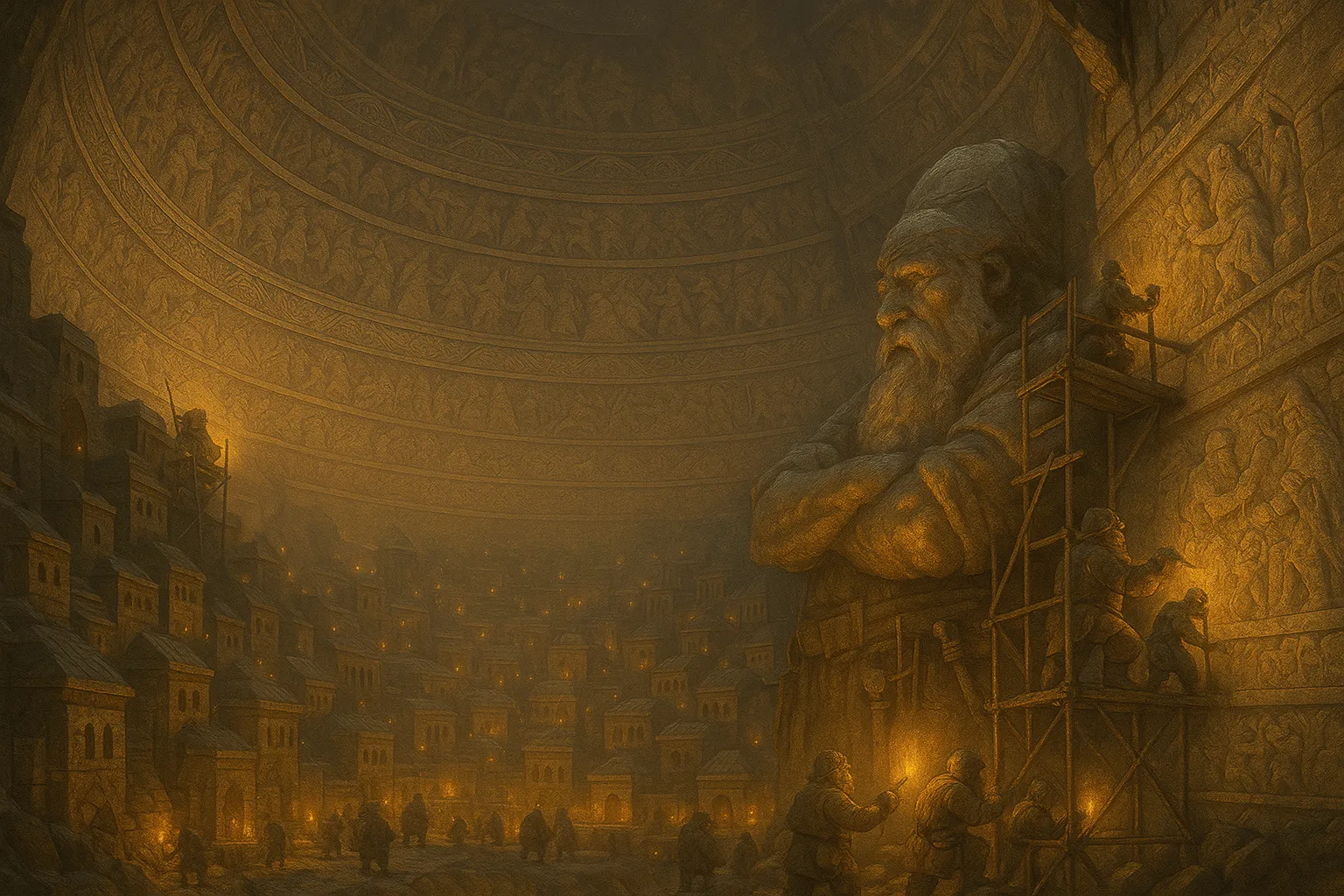 Their great cities are carved into singular caverns, left as unified hollows rather than segmented into halls or chambers. Ceilings arch high above their heads in mathematically precise domes, often etched with the history of the clan in layered murals — each generation assigned a band of the wall to record triumphs, warnings, or personal truths. These reliefs are chiseled not in words, but in scenes: quiet vignettes of fathers teaching daughters, mountains crumbling from careless magic, the rise and fall of oaths. To understand a Stonecutter city is to read its walls — and not all who try are welcome.
Their great cities are carved into singular caverns, left as unified hollows rather than segmented into halls or chambers. Ceilings arch high above their heads in mathematically precise domes, often etched with the history of the clan in layered murals — each generation assigned a band of the wall to record triumphs, warnings, or personal truths. These reliefs are chiseled not in words, but in scenes: quiet vignettes of fathers teaching daughters, mountains crumbling from careless magic, the rise and fall of oaths. To understand a Stonecutter city is to read its walls — and not all who try are welcome.
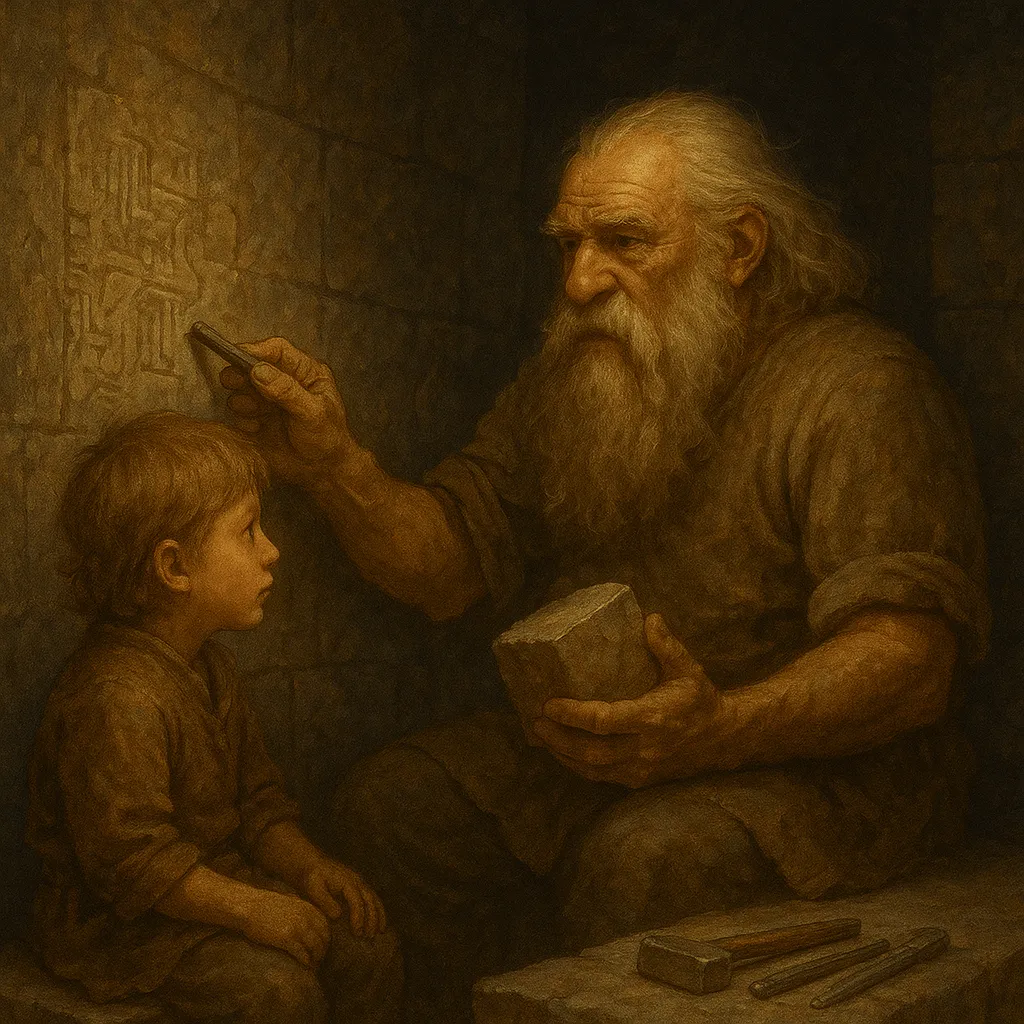 The dwarves themselves are structured by lineage and merit rather than blood alone. One may be born into a prestigious quarrying line, but it is mastery of the stone language — the rhythm of tools, the patience of the hand — that determines one’s place. Apprenticeship often begins in early youth, guided by a “Keeper” rather than a parent. These Keepers are not just masters of stone, but also its philosophy. Among the Stonecutters, the belief persists that stone has memory — that it records without intention, holding the shape of every footfall, every hammer strike, every unspoken prayer said while resting your palm to a wall.
The dwarves themselves are structured by lineage and merit rather than blood alone. One may be born into a prestigious quarrying line, but it is mastery of the stone language — the rhythm of tools, the patience of the hand — that determines one’s place. Apprenticeship often begins in early youth, guided by a “Keeper” rather than a parent. These Keepers are not just masters of stone, but also its philosophy. Among the Stonecutters, the belief persists that stone has memory — that it records without intention, holding the shape of every footfall, every hammer strike, every unspoken prayer said while resting your palm to a wall.
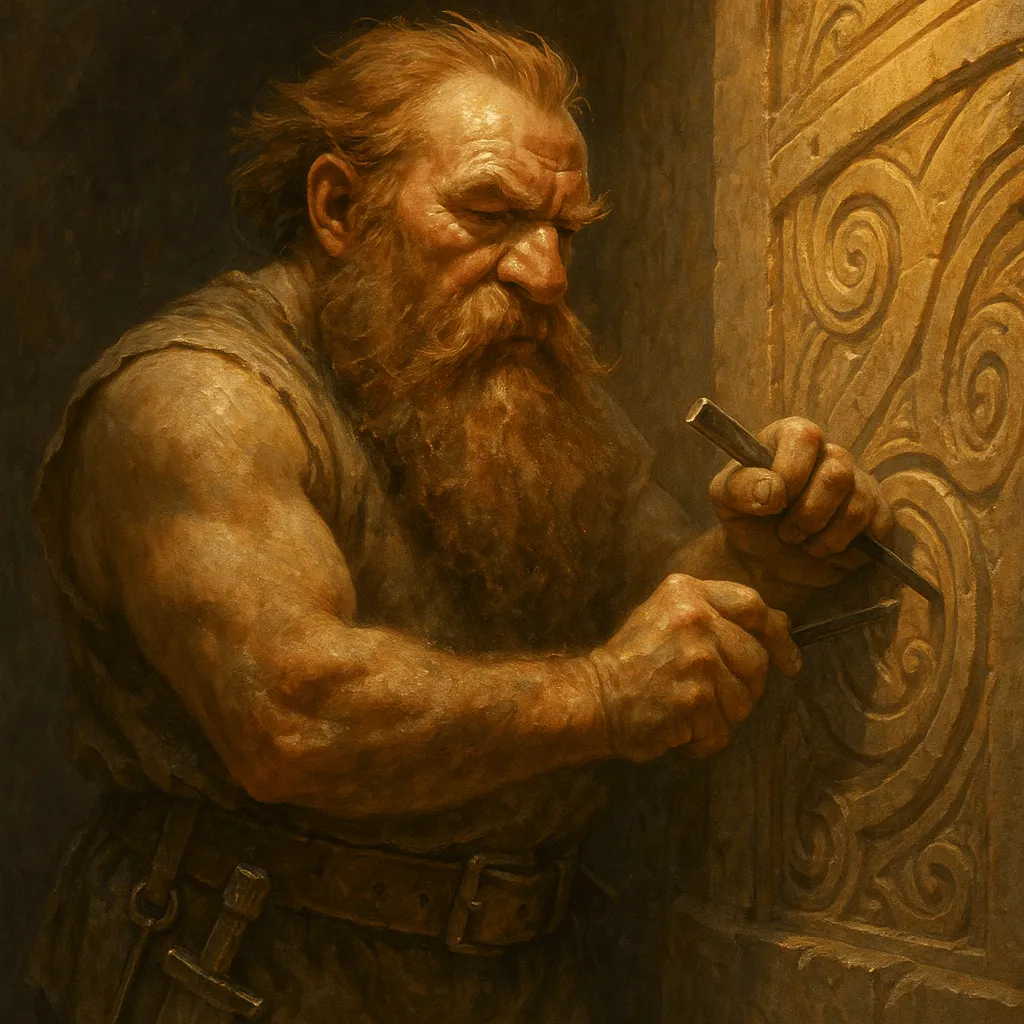 This has led to the Stonecutter’s most curious taboo: they refuse to inhabit any stone they themselves did not awaken. They will not settle abandoned ruins, nor take up residence in places carved by another people. Even in times of war, they would rather tunnel anew through solid bedrock than sleep in a ruin whose voice they cannot interpret. “Do not live in a lie you did not tell,” their saying goes — which is to say, make your own truth, even if it costs you the marrow of your bones to do so.
This has led to the Stonecutter’s most curious taboo: they refuse to inhabit any stone they themselves did not awaken. They will not settle abandoned ruins, nor take up residence in places carved by another people. Even in times of war, they would rather tunnel anew through solid bedrock than sleep in a ruin whose voice they cannot interpret. “Do not live in a lie you did not tell,” their saying goes — which is to say, make your own truth, even if it costs you the marrow of your bones to do so.
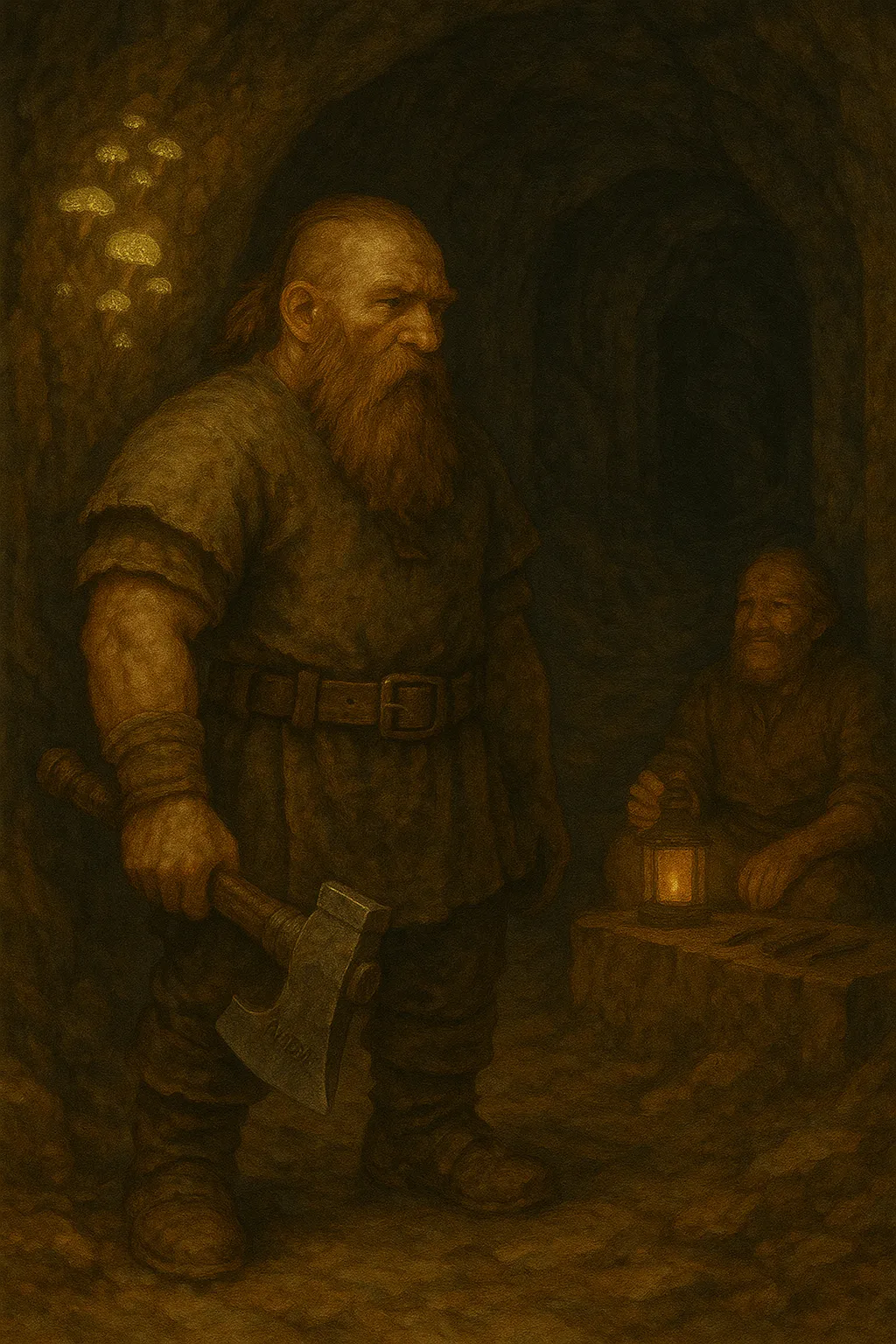 Unlike some dwarven cultures that revere wealth or craftsmanship as ends in themselves, the Stonecutters place value in restraint. A hammer made to last a century earns more praise than a jeweled scepter polished weekly. Art exists, but always with function — a mural must carry a memory, a statue must mark an oath, a staircase must feel like the weight of returning home. Excess is considered disrespectful, not only to the clan, but to the stone itself. For this reason, outsiders often misread Stonecutters as austere or even joyless. The truth is simply that their joy is quiet — a silent laugh echoing down a perfect corridor, a small figure added to a mural at night.
Unlike some dwarven cultures that revere wealth or craftsmanship as ends in themselves, the Stonecutters place value in restraint. A hammer made to last a century earns more praise than a jeweled scepter polished weekly. Art exists, but always with function — a mural must carry a memory, a statue must mark an oath, a staircase must feel like the weight of returning home. Excess is considered disrespectful, not only to the clan, but to the stone itself. For this reason, outsiders often misread Stonecutters as austere or even joyless. The truth is simply that their joy is quiet — a silent laugh echoing down a perfect corridor, a small figure added to a mural at night.
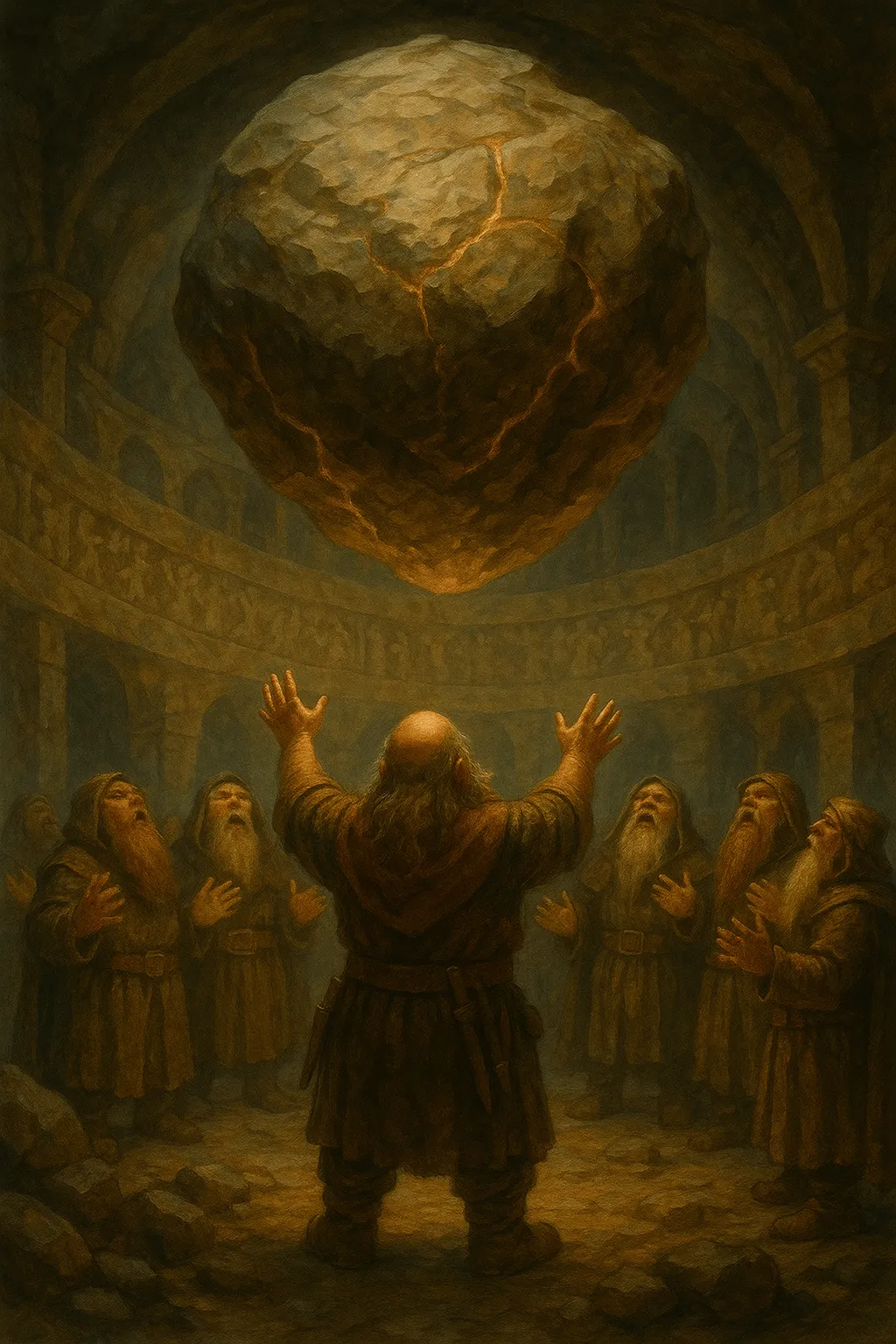 While few Stonecutters take to warfare easily, those who do are tacticians of terrain. They collapse caverns, carve decoys, and shift tunnels in ways that confuse even experienced invaders. Their warriors, known as Hollowbinders, often carry only a single weapon — a chisel-like axe forged to split stone or bone with equal resolve. They do not boast of kills. Instead, they carve the names of the fallen — friend or foe — into the haft of their weapon, then seal that weapon into the wall when it becomes full. Their greatest monuments are made of blades no longer wielded.
While few Stonecutters take to warfare easily, those who do are tacticians of terrain. They collapse caverns, carve decoys, and shift tunnels in ways that confuse even experienced invaders. Their warriors, known as Hollowbinders, often carry only a single weapon — a chisel-like axe forged to split stone or bone with equal resolve. They do not boast of kills. Instead, they carve the names of the fallen — friend or foe — into the haft of their weapon, then seal that weapon into the wall when it becomes full. Their greatest monuments are made of blades no longer wielded.
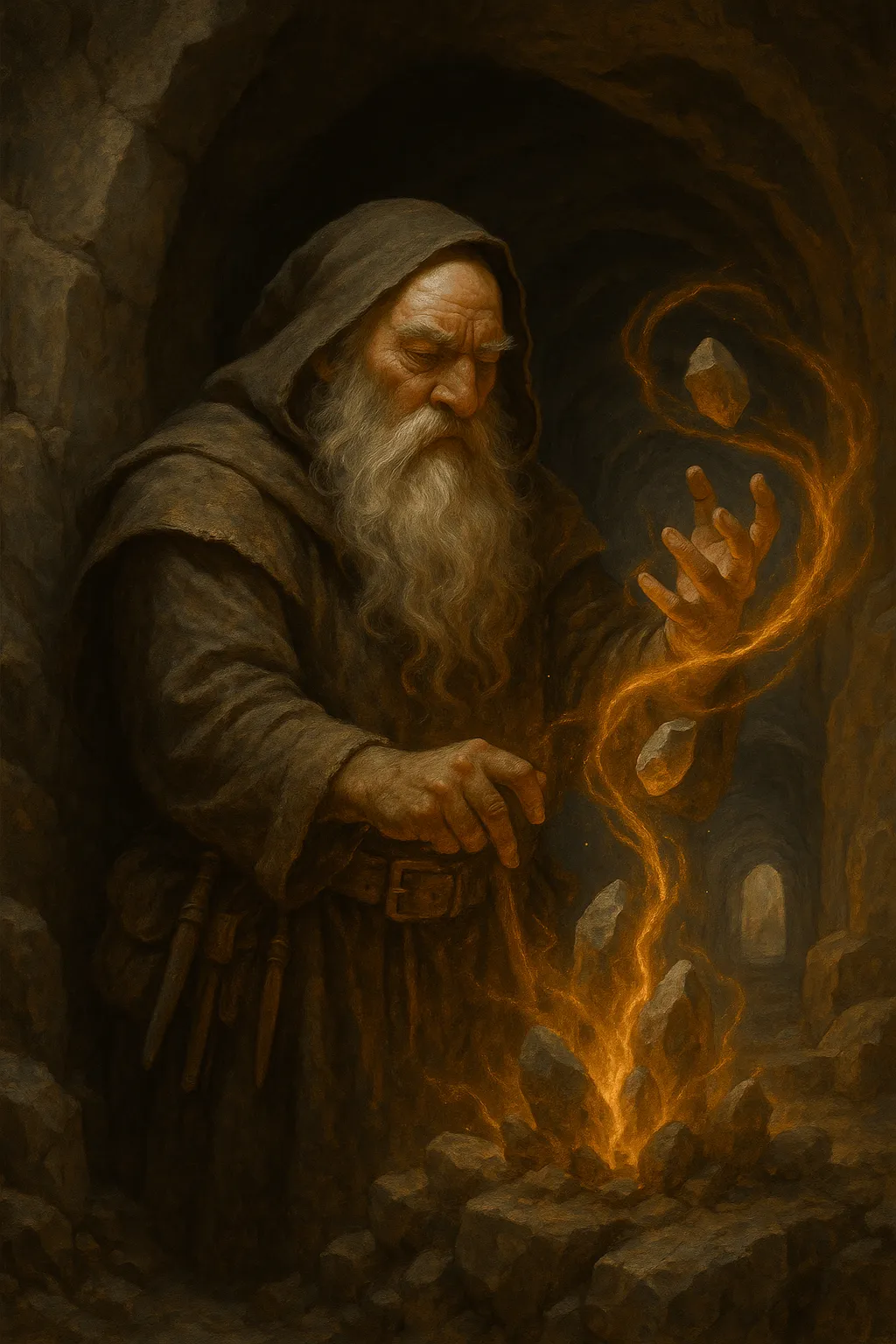 Magic among the Stonecutters is viewed with a mixture of reverence and caution. While some clans practice geomancy — magic that bends or communes with the earth — it is done through long rites and rituals, never on impulse. Spellcasting is not taught, but earned, and its use is restricted to what the stone itself allows. “Ask it, and wait,” a Stonecutter mage might say. “If you force it, it will remember — and someday, it will push back.”
Magic among the Stonecutters is viewed with a mixture of reverence and caution. While some clans practice geomancy — magic that bends or communes with the earth — it is done through long rites and rituals, never on impulse. Spellcasting is not taught, but earned, and its use is restricted to what the stone itself allows. “Ask it, and wait,” a Stonecutter mage might say. “If you force it, it will remember — and someday, it will push back.”
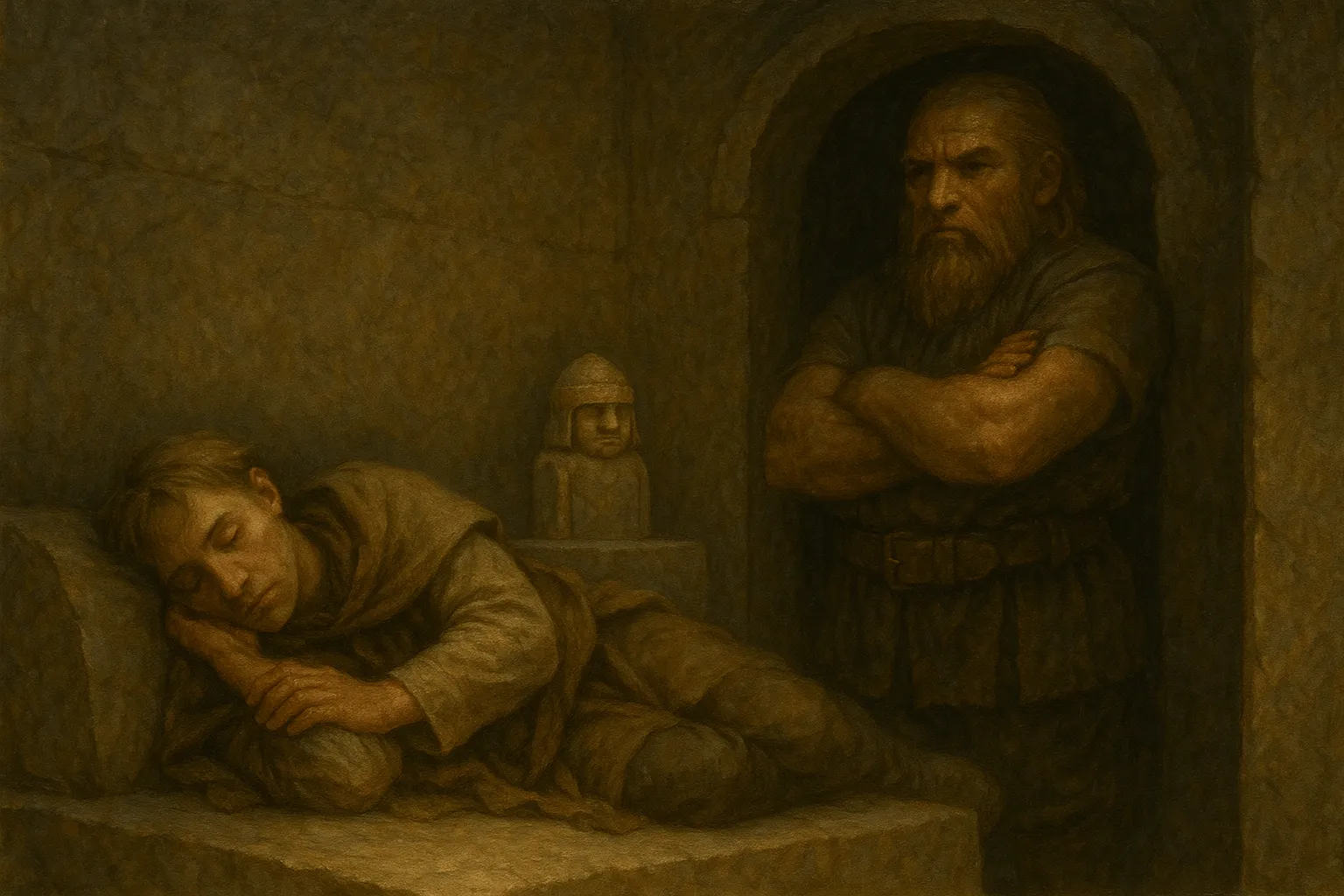 Their relationship with other races varies by region, but generally remains distant. Stonecutters are slow to trust, not because they are cruel, but because they measure lifespans in strata, not seasons. A human king’s promise means little when the stone knows that king will be dust in half a century. Elves fare better, but often find Stonecutter hospitality hard to interpret. No feasts, no songs — only an open tunnel, a safe ledge to sleep on, and perhaps a single carved figurine left by your bed. If the figurine wears a helmet, you are respected. If it holds a lamp, you are being asked to leave.
Their relationship with other races varies by region, but generally remains distant. Stonecutters are slow to trust, not because they are cruel, but because they measure lifespans in strata, not seasons. A human king’s promise means little when the stone knows that king will be dust in half a century. Elves fare better, but often find Stonecutter hospitality hard to interpret. No feasts, no songs — only an open tunnel, a safe ledge to sleep on, and perhaps a single carved figurine left by your bed. If the figurine wears a helmet, you are respected. If it holds a lamp, you are being asked to leave.
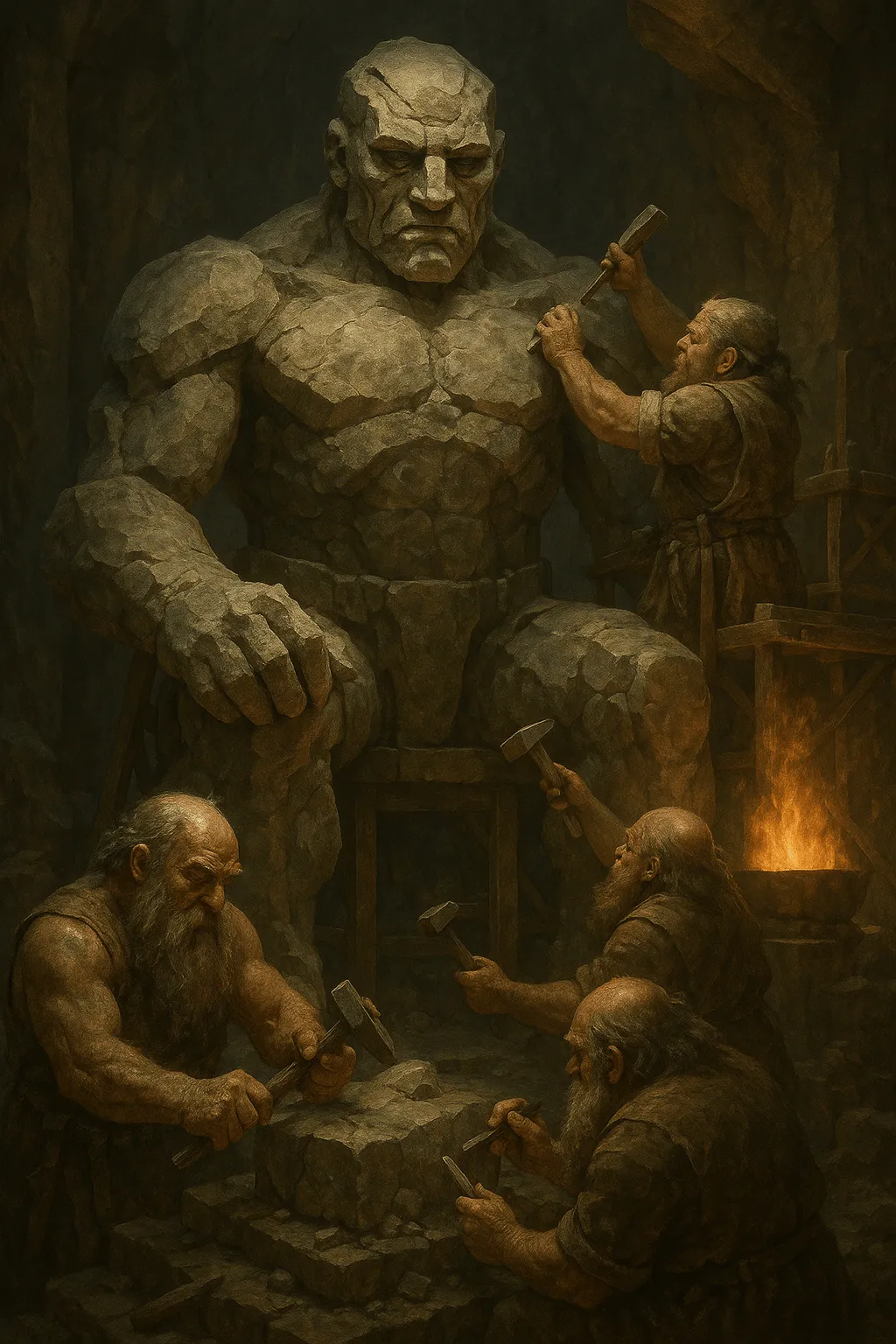 Stories persist about the founding of the Stonecutters, though they are told in low tones and seldom to strangers. Some believe they were born from a pact between a forgotten god of silence and a dying mountain. Others say the first Stonecutter was a runaway from a surface clan, who listened so deeply to the stone that it taught her to shape it without tools. Still others whisper of a great betrayal — a dwarven city brought low by greed, which the Stonecutters refuse to name or rebuild. Whatever the truth, one fact endures: their cities never fall the same way twice.
Stories persist about the founding of the Stonecutters, though they are told in low tones and seldom to strangers. Some believe they were born from a pact between a forgotten god of silence and a dying mountain. Others say the first Stonecutter was a runaway from a surface clan, who listened so deeply to the stone that it taught her to shape it without tools. Still others whisper of a great betrayal — a dwarven city brought low by greed, which the Stonecutters refuse to name or rebuild. Whatever the truth, one fact endures: their cities never fall the same way twice.
To meet a Stonecutter Dwarf is to witness discipline made flesh, shaped not by war or ambition, but by memory and the weight of legacy. They are not loud. They are not swift. But they endure, and they remember — and the stone beneath your feet may already be listening.
The following magical heirlooms are fictional and lore-based in nature. Each one is an affiliate link to a real-world item on Amazon that we've hand-selected to complement this artifact's lore.

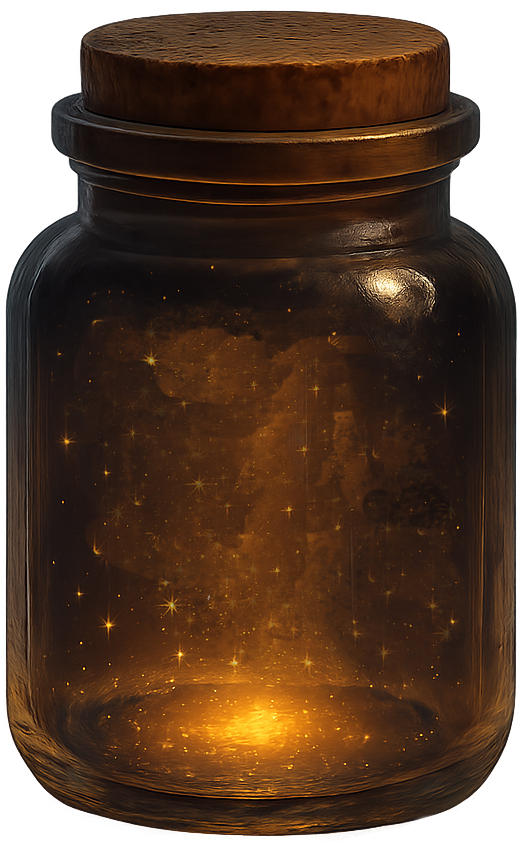
If you click a link and buy an item, we may earn a commission.It costs you nothing extra, but can help keep this little corner of the internet glowing.
What does this mean?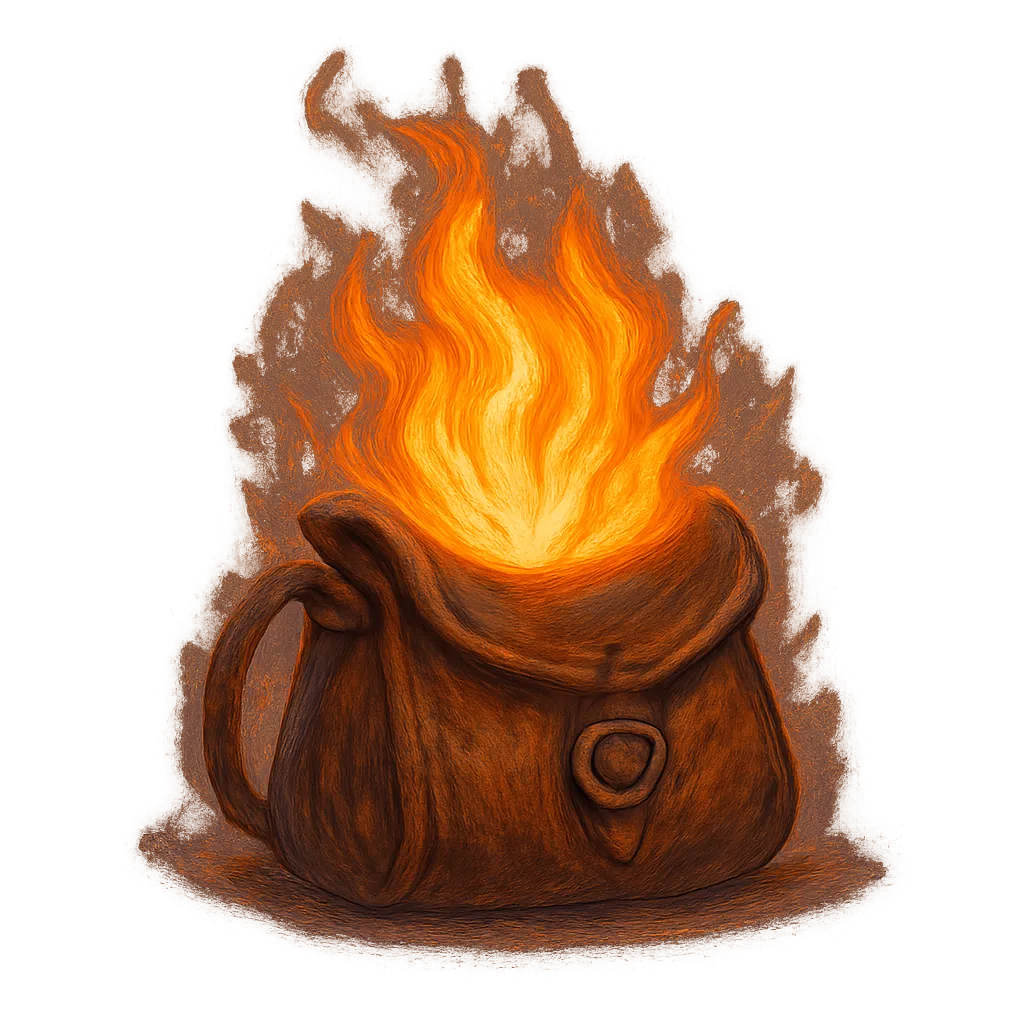
Fire without the fuss! Perfect for bardic storytelling.

Sharp enough to fell any tree, wise enough to ask which ones.
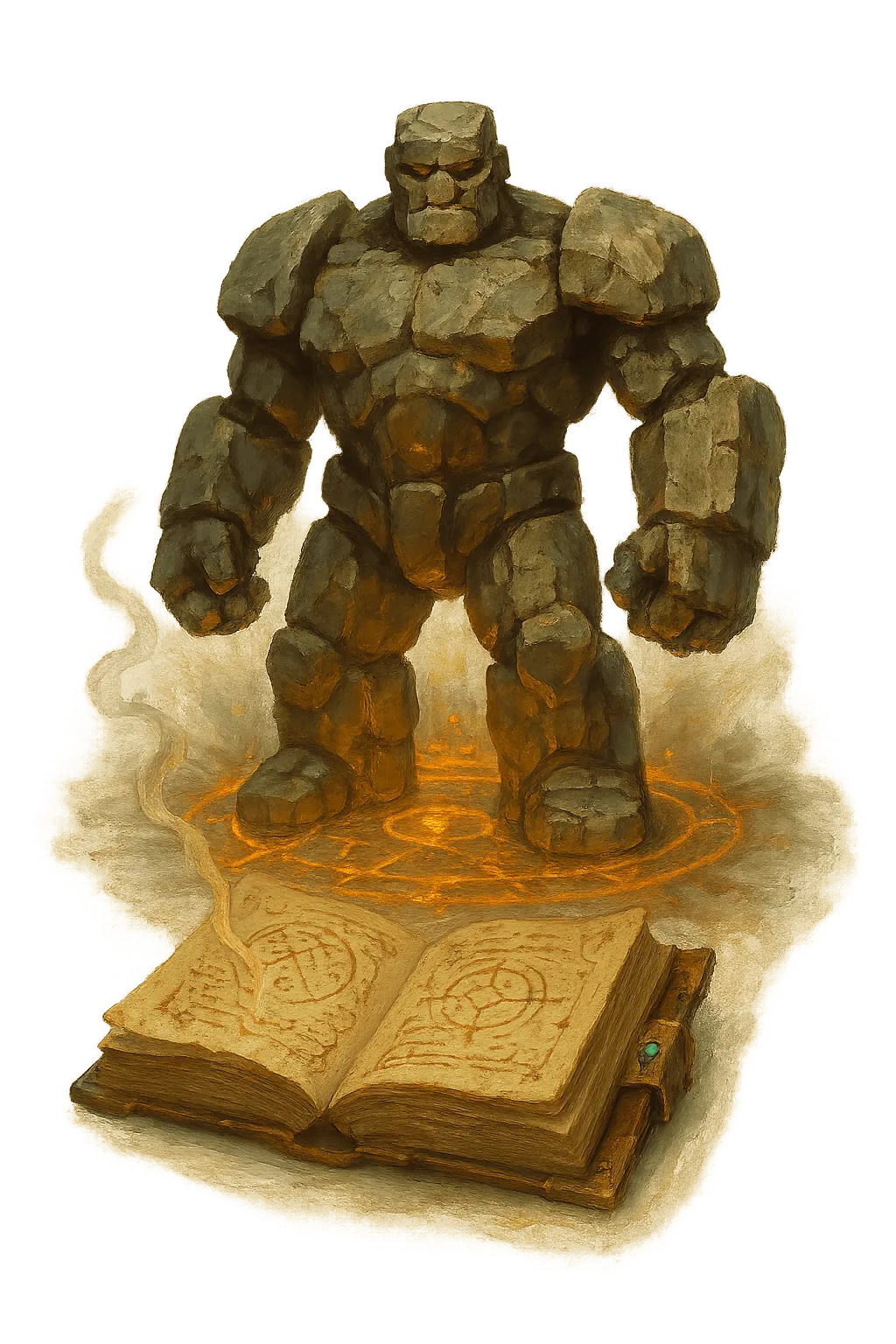
Preloaded with three golem templates: Clay, Stone, and “Oops, It’s Alive.”
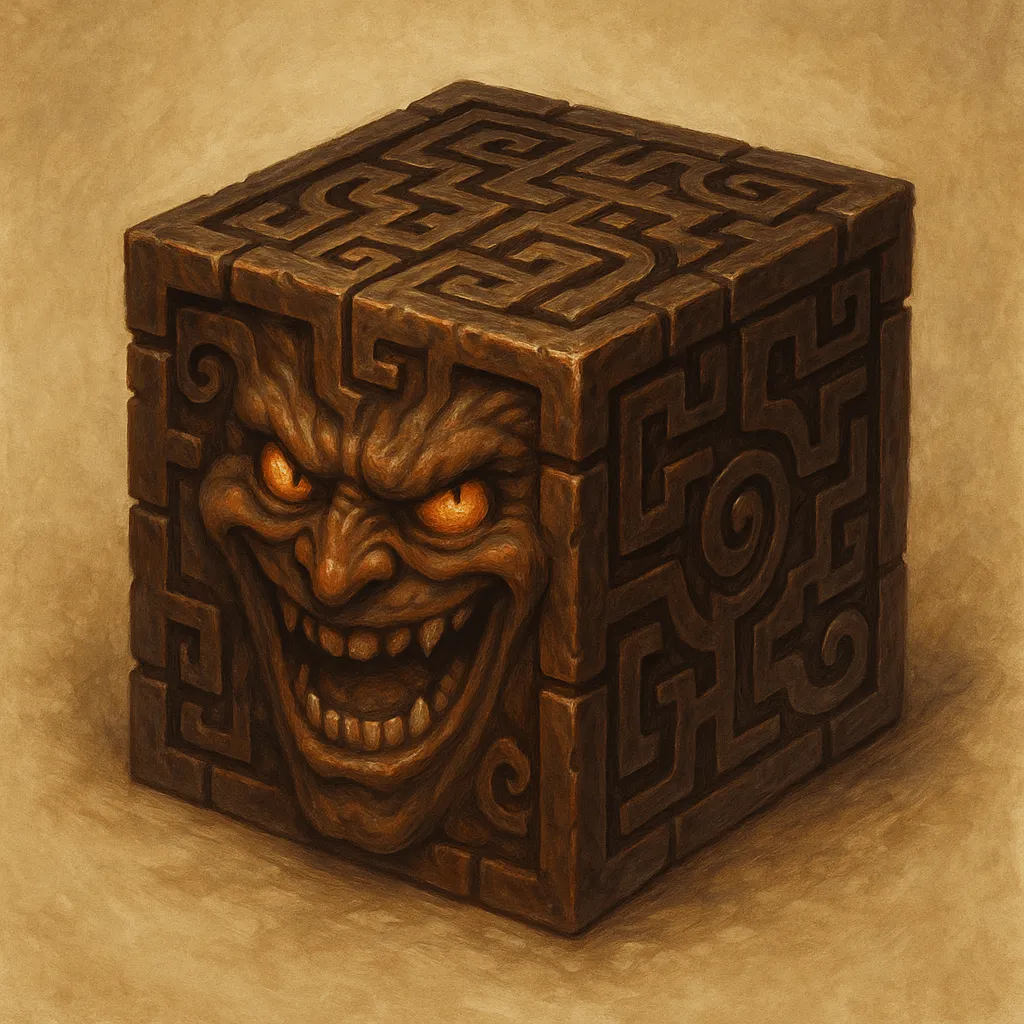
It laughs uncontrollably, alternating between angry and ticklish.








